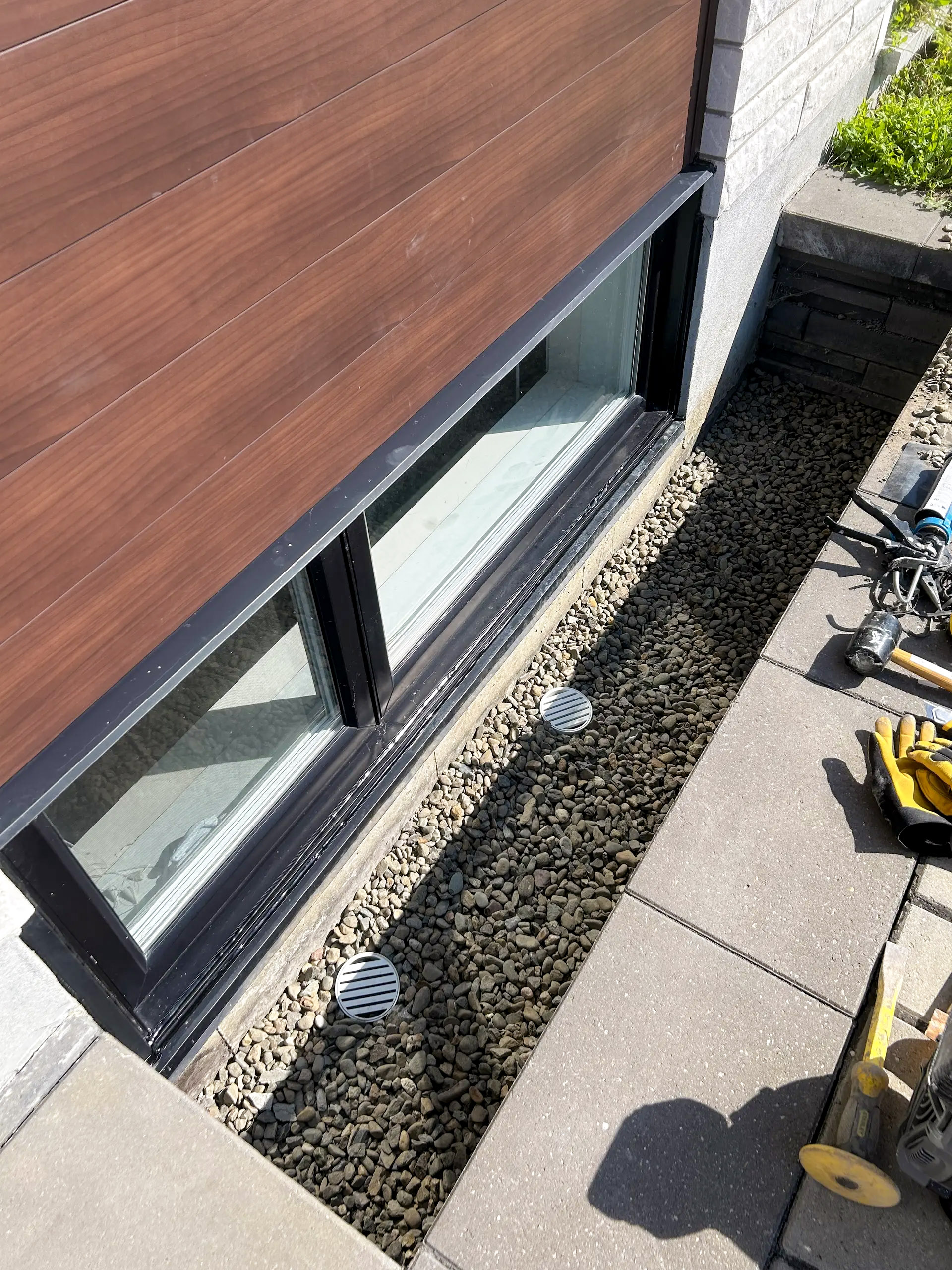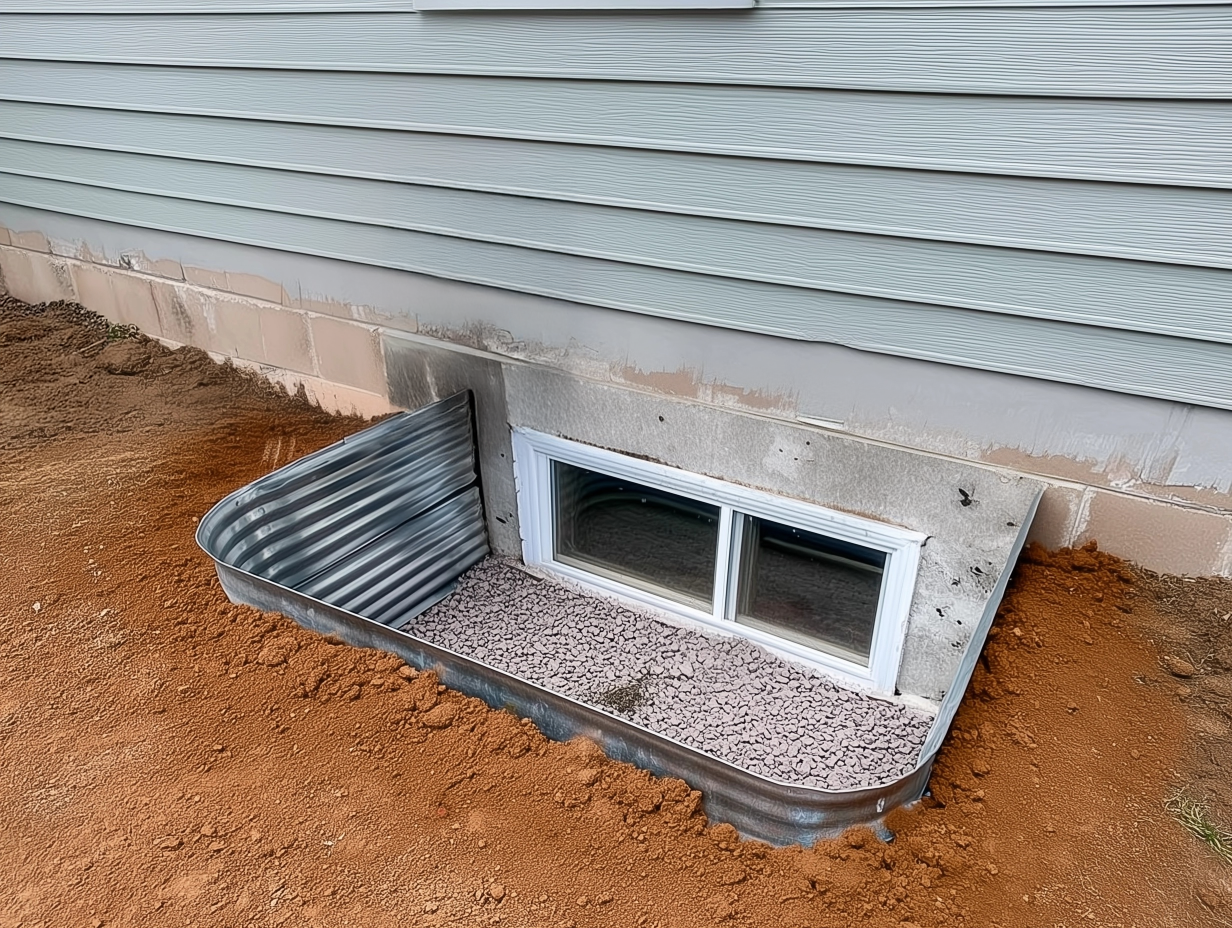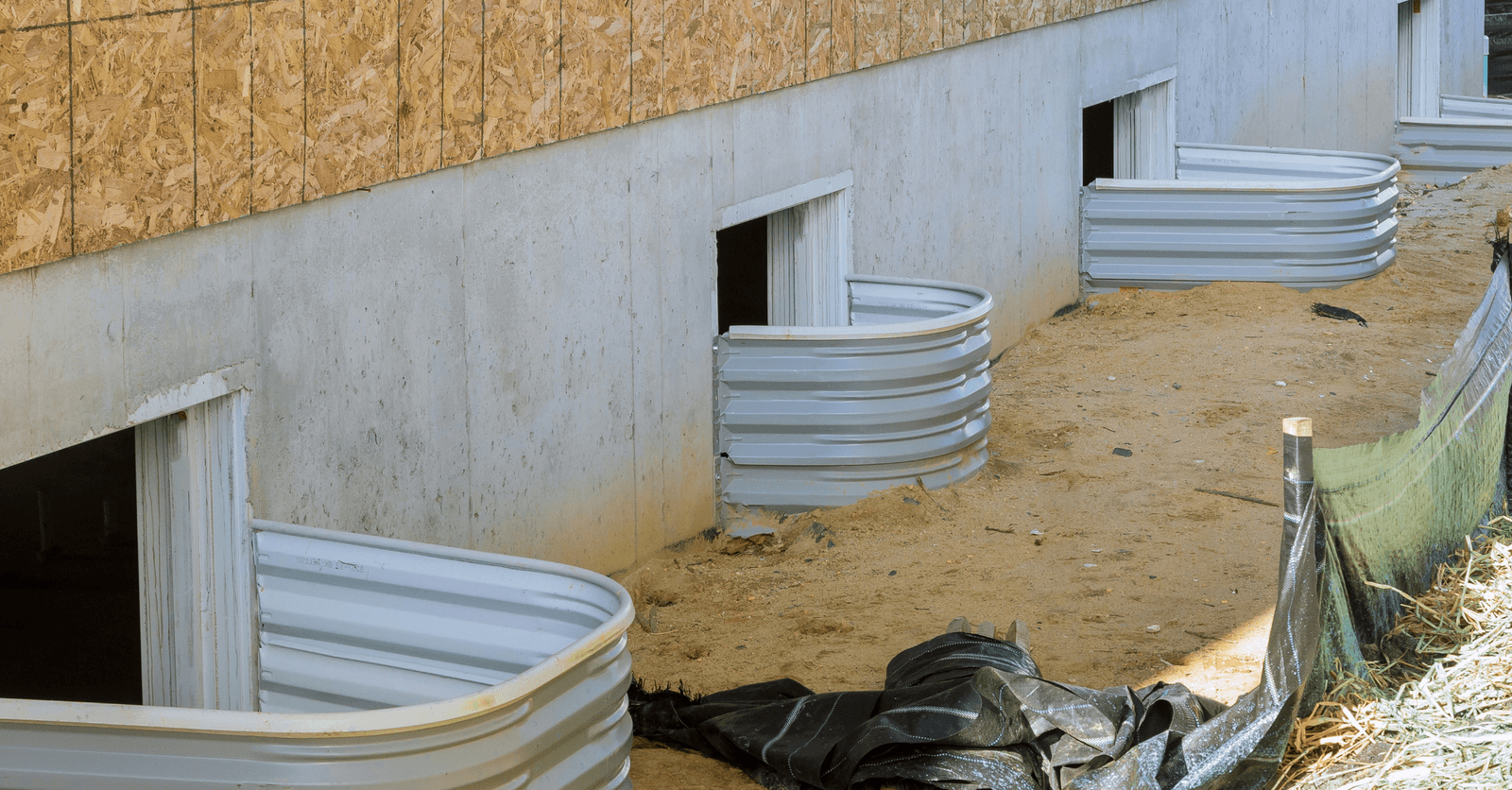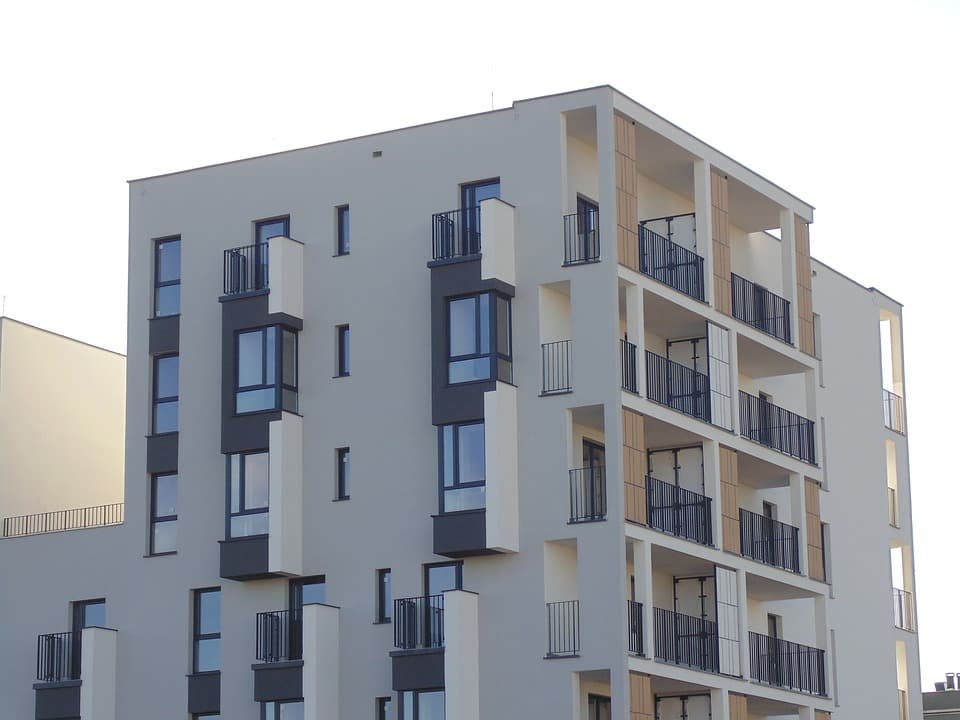Window Well Installation – Why is it necessary and how to do it?
By Editorial Team
Updated on May 22, 2025

Water is a home’s number one enemy, so when the sill of a basement window is level with or just slightly higher than the lawn, the proximity of the ground can expose window components to soil moisture. This exposes your home to the harmful effects of the outdoors by increasing the risk of water infiltration.
A basement window requires additional protection to prevent premature damage. So when the window is low or located below ground level, it is strongly recommended to install a window well (also known as a light well).
What is a window well? And what are the specifics of this type of installation? Read our article to learn more about it.
What is a window well and why should you install one?

Source : PBG construction inc
A window well is a protective barrier made of steel, stone, concrete, or wood that is attached to the foundation and serves to hold back the soil. This installation forms a light well designed to lower the ground level in front of a basement window, without affecting the grade of the surrounding area.
This helps prevent water infiltration through the window, which is why it’s important to leave at least 8 inches of clearance between the finished ground and the bottom of the window. You can also add a mesh cover to your window well to protect people and animals from falling in. Additionally, this cover helps reduce the buildup of leaves and debris inside the cavity.
A window well is essential to prevent water or moisture from collecting near a window that’s at or below ground level. It acts as a barrier to prevent any source of moisture that could lead to the deterioration of your home’s materials. Water infiltration increases the risk of mould, whose spores can cause respiratory issues in living beings.
Instructions on How to Install a Window Well

Source : RenoQuotes
In addition to the requirements set by Quebec’s Construction Code, there are some best practices to follow if you plan to dig and install your own window well. Here are the tools you’ll need:
A shovel and a drill
A masonry bit
A ratchet wrench
Lag bolts
Washers and anchors
A flexible, non-perforated drainage pipe
A window well
Crushed stone
The first step—often the hardest—is to dig around the window to a depth of 10 to 14 inches below the bottom of the window. However, you must consider the window’s size to determine the exact depth to dig.
There should be a clearance of 8 inches on each side of the window. If the soil in the area is not granular or does not allow proper drainage, you may need to dig a pit for water drainage before installing the drainage pipe.
The window well must be installed above the finished ground level. It also needs to be centred with respect to the window. Then, lean the well against the wall and mark the holes for drilling.
Once the holes are deep enough in the concrete, insert the anchors before bolting the window well in place. The final step is to fill the bottom with crushed stone up to 6 inches below the window base. Add soil outside the well to create a slope for drainage.
After installation, make sure the interior of the well is level and that its edge isn’t protruding too much—this helps avoid tripping hazards. Finally, remember that your window well needs upkeep: remove leaves and any other debris that may collect inside.
Regulations to Follow When Putting in a Window Well
Following a 2015 update to Quebec’s Construction Code, any bedroom window that opens into a window well must be at least 760 mm above the ground (compared to 550 mm previously). This also applies to any window that opens to the outside.
Keep in mind that some municipalities may require even more clearance, so it’s best to check local regulations to avoid any surprises. These requirements are meant to provide enough clearance for an average-sized person to pass through if needed.
Window well drainage: how to install a drain?

Source: Canva
Since your window well will be made from the same material as your backfill, you’ll need to consider this during installation. If the backfill is not made from granular material, the bottom of the well must be properly drained.
To do this, install a vertical pipe at least 6 inches in diameter that runs underground down to the foundation drain at footing level. If the bottom of the well is less than 6 feet from the footing, it’s best to consult a professional to avoid damaging the foundation during freeze-thaw cycles.
Looking for more information about doors and windows? Check out our Guide to Renovating Doors and Windows.
FAQ About Window Wells
When should you install a window well for your basement?
A window well is necessary when basement windows are located below ground level. It prevents water and debris from collecting around the window and ensures proper lighting and ventilation. It’s also essential for meeting safety standards for emergency exit windows.
How should window wells be positioned?
Window wells should be placed around basement windows and slightly sloped outward to allow for proper water drainage. Make sure they’re installed at least 6 inches above the ground level to prevent infiltration.
How do you install a window well cover?
To install a cover, first measure your window well and select a compatible model. Place the cover over the well, making sure it fully covers the surface. Secure it with screws or fasteners to keep it in place, and ensure it can still be removed easily for maintenance or access.
How much does it cost to install a window well drain?
Installing a vertical drain pipe directs water toward the foundation drain and should be paired with an aggregate backfill at the bottom of the window well to support proper drainage. The cost typically ranges from $100 to $300.
Can I install my own window well?
Yes, you can. Here are the steps to follow:
Dig a trench around the window, reaching the base of the foundation.
Install a drainage system on the bottom of the trench to drain water.
Fit the window well against the foundation and make sure it’s level.
Secure the window well to the foundation with fasteners or screws.
Backfill the trench with compacted soil, allowing for a slight slope to facilitate water flow.
Test the drainage by pouring water around the window well, checking to see if the water flows away from the foundation.
Looking for something else?
Related articles
The latest industry news, interviews, technologies, and resources.

Editorial Team
•12 Aug 2024
For any property that's not connected to a municipal sewer system, putting in a septic system is a must. To demystify its functioning, on top of the recommended damage protection methods, we bring you the following article.

Cynthia Pigeon
•25 Jul 2025
Are you considering adding a sunroom to your home, but unsure of the details? Wondering how they differ from solariums or whether they’re a good investment? This article explores everything you need to know about glass sunrooms, from design considerations and construction challenges to their costs and benefits. You’ll also discover how to choose the right glazing and heating solutions to ensure your sunroom is a comfortable, functional addition to your home, no matter the season.

Editorial Team
•07 Nov 2023
The idea of renovating your house can sometimes spring up at an unexpected moment. Next thing you know, you find yourself browsing the internet looking for inspiration on Pinterest. However, if you're renting your apartment, it could be difficult to start any renovation projects. The final decision will be up to your landlord if you need to make any major changes to your space.

Editorial Team
•07 Nov 2023
Owning a rental apartment is not without challenges to overcome, as it comes with a number of obligations and responsibilities, which aren’t easy to maintain.

Editorial Team
•07 Nov 2023
Have white kitchens gone out of style? While it is true that the trend has been somewhat overrated and overused in recent years, it would be an exaggeration to go so far as to say that they’re completely outdated.